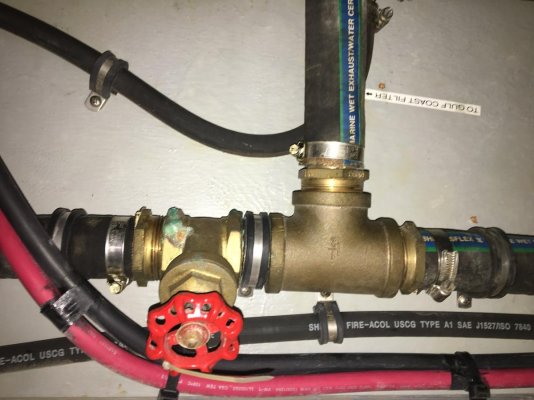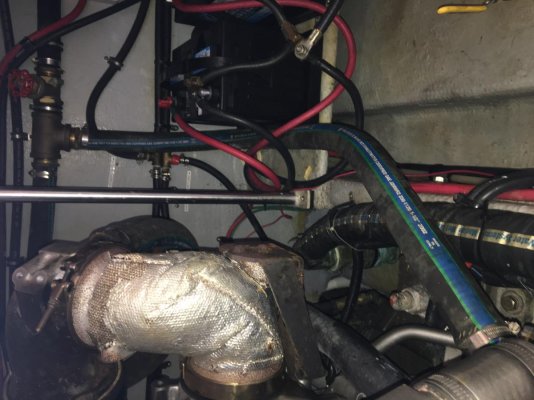Djoub
Veteran Member
So I have this discharge hose coming from my 2008 Yanmar 370hp up to a tee with a gate valve. One side of the tee goes into the muffler inlet, the other side goes thru the gate valve and to a thru hull on the port side. I want to replace the hoses and also replace the (starting to corrode) brass gate valve with a bronze ball valve. Many have told me that brass and gates don’t belong in the marine environment due to zinc content. Before I just change it out I would like to know what it is for and why it was installed.
I’m guessing it is some kind of balancer to control muffler temperature or flow.
Any ideas and is there something I need to do before replacing it like measuring temperature? Hoping the experts have a idea, thanks.
I’m guessing it is some kind of balancer to control muffler temperature or flow.
Any ideas and is there something I need to do before replacing it like measuring temperature? Hoping the experts have a idea, thanks.


